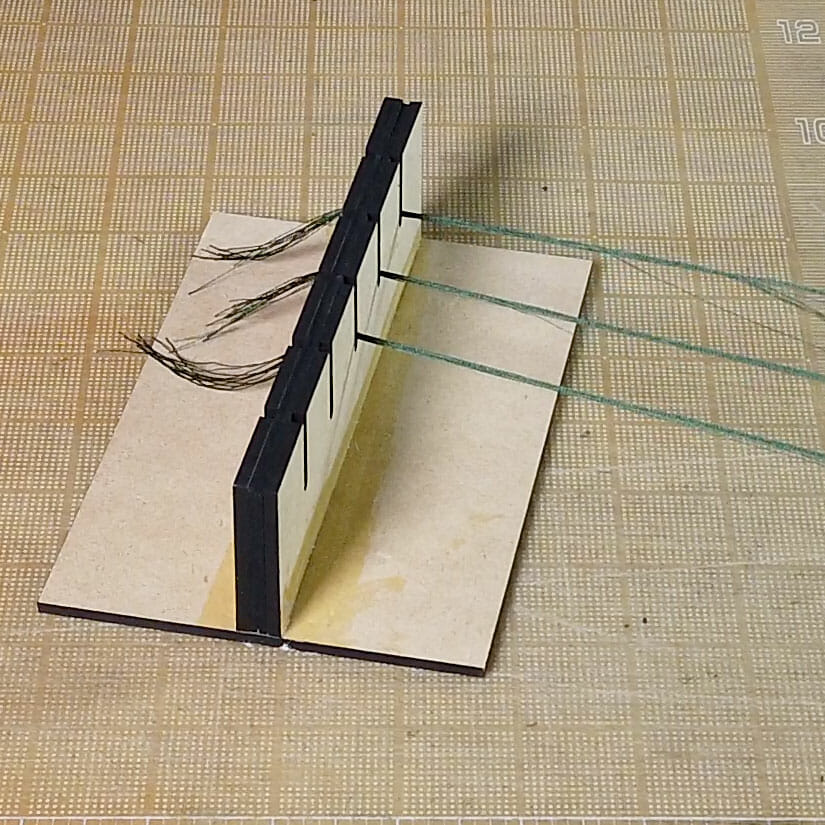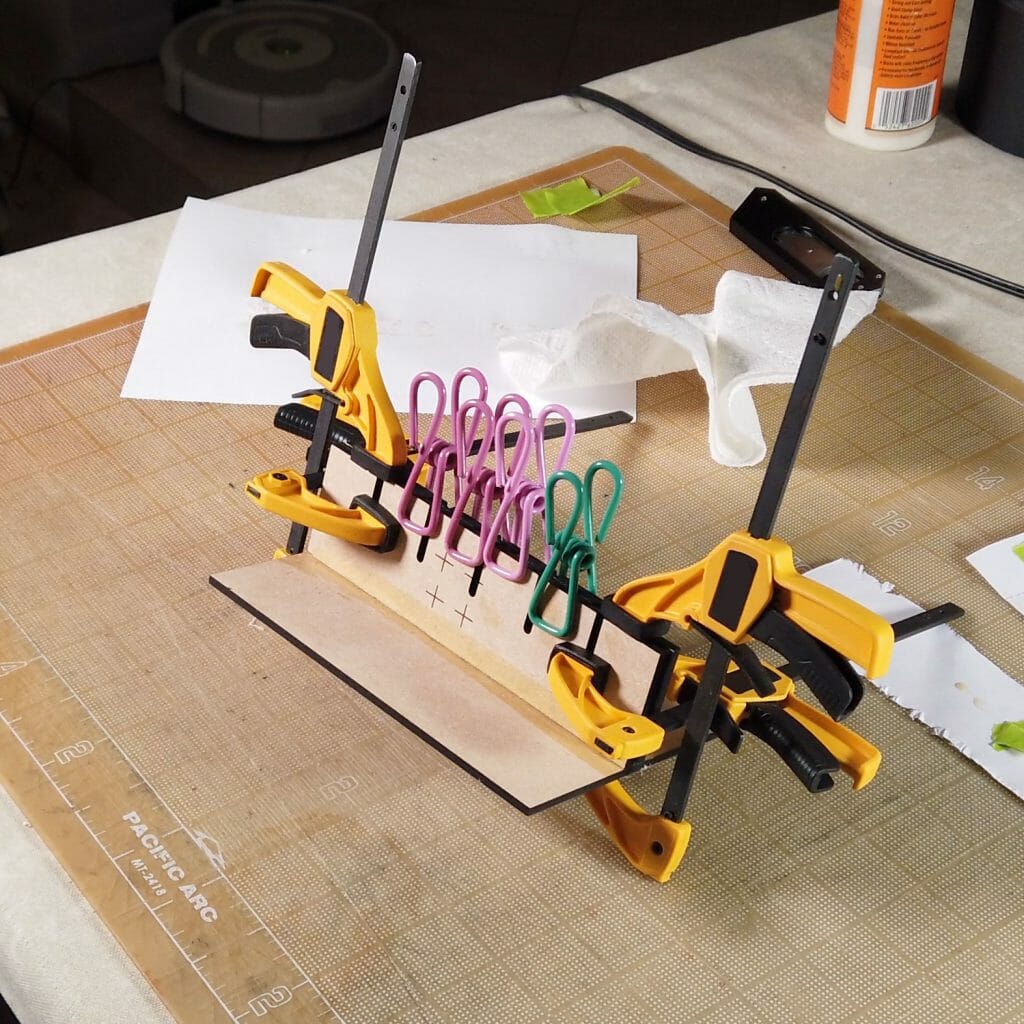Celtic Design Fabric
I have been working on a collection of Celtic design fabrics, including several key patterns, a spirals pattern, and now a knotwork design.
Continue readingI have been working on a collection of Celtic design fabrics, including several key patterns, a spirals pattern, and now a knotwork design.
Continue readingI made a small dice pouch prototype from custom-printed Celtic spirals fabric, faux leather and braided kumihimo cord.
Continue reading3D printed, hand-painted Kokeshi (a traditional style of Japanese doll) styled on my friend Tanya, who is the keeper of her family’s cultural traditions for her nieces.
Continue reading
This is a quick, simple tool to assist when separating skeins of kumihimo (or embroidery) floss into working clusters with the desired number of strands. The upright is a sandwich of a piece of EVA foam between two pieces of 1/4″ stock (MDF here but, something like Baltic birch ply or acrylic should work, too). The EVA is sliced with a razor blade in the middle of each channel. Then, just glue it all together with wood glue. Some clamping is likely required while it dries.

It is probably best to clamp it down to a table when using. Knot the end of the skein/bundle of strands and, slip it into the cut in the EVA. That should keep the end in place while you separate the full length.